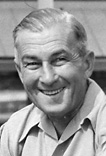 Morty Graves was one of the earliest motorcycle racing stars of the Los Angeles board track racing late in the first decade of the 1900s. He won many races and set numerous records on the giant wooden board tracks of the day. By the early 1910s, Graves was racing across America on the boards, dirt tracks and road races as a factory rider for such teams as Merkel and German-made NSU.
Morty Graves was one of the earliest motorcycle racing stars of the Los Angeles board track racing late in the first decade of the 1900s. He won many races and set numerous records on the giant wooden board tracks of the day. By the early 1910s, Graves was racing across America on the boards, dirt tracks and road races as a factory rider for such teams as Merkel and German-made NSU.
Perhaps the biggest victory for Graves was his win at the FAM 10-Mile National Championship in Philadelphia in 1910 aboard a Flying Merkel. He also was a perennial top contender in the Dodge City 300 — the biggest race in America during the 1910s.
Graves was born December 10, 1890, in Chicago. He started racing shortly after he began riding motorcycles at the age of 16. In a magazine interview in the early 1920s, Graves said that this was during the time that motorcycles still had wooden rims. Graves didn’t do well at racing early on, but he was persistent and soon began working his way up the ranks.
By 1907 he got his first real racing motorcycle — an Indian with an Oscar Hedstrom-designed motor. With this machine, Graves quickly became one of the leading racers in Southern California.
By 1908, Graves had established himself as perhaps the best board track racer in Los Angeles. Several manufacturers came to him to have their machines tested, and as a result Graves rode a wide variety of machinery. At one time he was backed by such diverse manufacturers as Minerva (made in Belgium) and NSU.
He won many races on the unique NSU. The bike had a drive belt that was so wide that it would touch as he leaned hard into the turns on the banked board circuit ovals. He claimed that the extra traction provided by the drive belt actually helped him go faster through the turns, although he admitted that when ridden this way, the belt would wear out in about three laps.
Also in 1908, Graves rode a Merkel on the new LA Motordrome board track to speed records for all distances from 2 to 25 miles. His time for 2 miles was 1:17, and he covered 25 miles in 16:36.
As a tester, Graves rode one of the very first Henderson four-cylinder machines set up for racing. The torque from the big motor was such that the bike would not stand up coming out of a turn. Graves and three other riders crashed (all unhurt) through the inside fence of Maywood Speedway in Chicago trying to tame the awkward-handling Henderson.
Graves was one of the first riders to beat legendary Indian factory rider Jake DeRosier when DeRosier traveled west to race the best Los Angeles-area board track riders. The victory over DeRosier added greatly to Graves’ fame on a national basis.
In 1910, Graves began traveling across the country racing FAM nationals. Graves showed his versatility when he won against most of the top riders of the day on a mile dirt track near Philadelphia in the FAM 10-Mile National Championship. It marked the first national title for Graves, who at the time was riding for Merkel.
In 1913, Graves experimented with a streamlined tail section on his racing Indian. The tailpiece looked very much like the tailpieces on modern-day sport motorcycles.
Graves experienced the biggest heartbreaking racing loss in the famous Dodge City (Kansas) 300 in 1915. In that race, Graves was riding a factory Indian and moved into the lead late in the event. In the closing laps, a crack developed in his bike’s gas tank and it began leaking fuel. With just one lap remaining the bike sputtered to a stop on the backstretch. Harley-Davidson’s Otto Walker went on to win the race. Graves said he was so upset with losing the country’s biggest motorcycle race that he temporarily retired from the sport.
Graves did come back to race a few more times before the outbreak of World War I brought a temporary end to racing at the end of 1916. After the war, Graves retired for good.
Graves ran a dealership in Hollywood, California, until his death in December, 1944.
Inducted in 1998